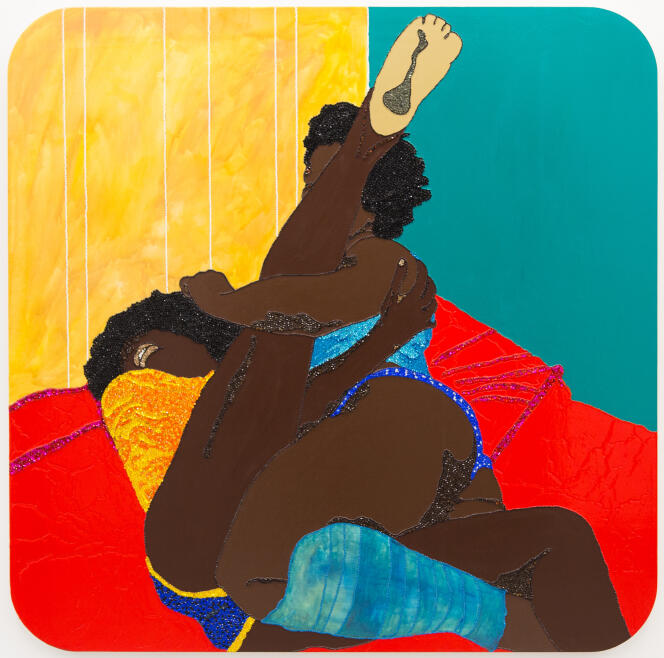
“When We See Us,” an exhibition at the Gegenwart museum of contemporary art in Basel, Switzerland, is exceptional for several reasons. Firstly, there is its subject, indicated by its subtitle, which is less enigmatic than the title: “A Century of Black Figuration in Painting.” More precisely, the exhibition features a century of paintings whose artists are Black and who have taken their subjects from the lives of men and women living in Africa or belonging to the African diaspora. It brings together works executed in the 20th and 21st centuries in Africa, North America and Europe. Nothing like this has ever been attempted before in such a comprehensive way, and many of the painters featured are still little-known outside their own countries: That’s the first reason to go and see the exhibition.
The second reason is its size. In its initial version, which ran for almost a year, in 2022-2023, at the Zeitz Museum of Contemporary Art Africa (MOCAA) in Cape Town, South Africa, it brought together 208 works by 161 artists. The Basel version is more modest, but it occupies all the spaces of the institution, in a display that is intended to be thematic, but is only partly so, because many of the canvases escape any such classification. But even in this more modest format, “When We See Us” is still a series of discoveries.
Thirdly and finally, no staging of the exhibit in France has been announced. So it’s Basel or nothing. If French museums stood out for their curiosity about African artistic creation, we wouldn’t remark on it. But the Centre Pompidou hasn’t done anything on the subject since “Africa Remix” in 2005 – almost 20 years ago – and the last large-scale event devoted to creation on the continent took place in 2017, at the Fondation Louis Vuitton in Paris.
A singular style
The exhibition therefore responds to a historical and anthropological question: the representation of everything to do with Black, with the notion of Blackness. The exhibition uses those English words, and they are more apt than the French négritude, which is undoubtedly too attached to a particular period, the 1950s-1960s, and to Francophone thinkers and writers – Léopold Sédar Senghor, Aimé Césaire, Frantz Fanon – who are scarcely represented here.
Two selection criteria were used together: the origin of the artists and that of their models. Conversely, no artistic criteria were involved. The most distant styles are juxtaposed, drawing on references that are themselves highly heterogeneous, or that assert a singular style. Realistic narrative scenes from everyday life rub shoulders with portraits, nudes and allegorical compositions. No chronology or geography has been followed, and works separated by decades and thousands of kilometers can be found in close proximity to one another.
You have 59.32% of this article left to read. The rest is for subscribers only.